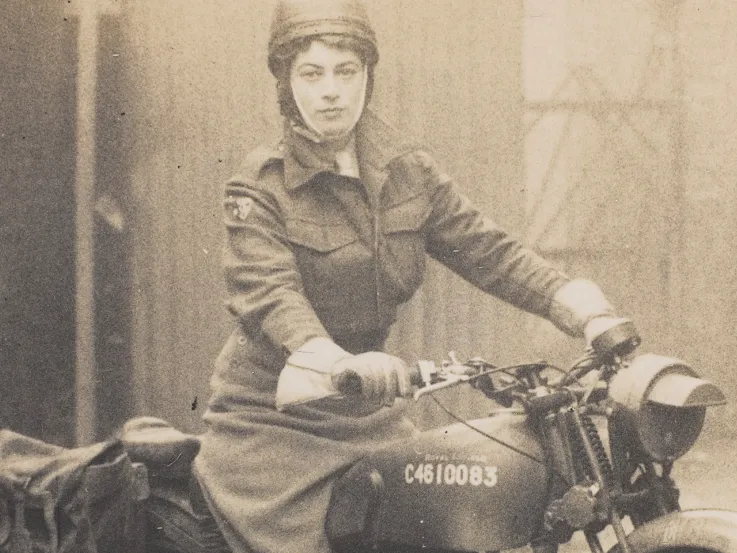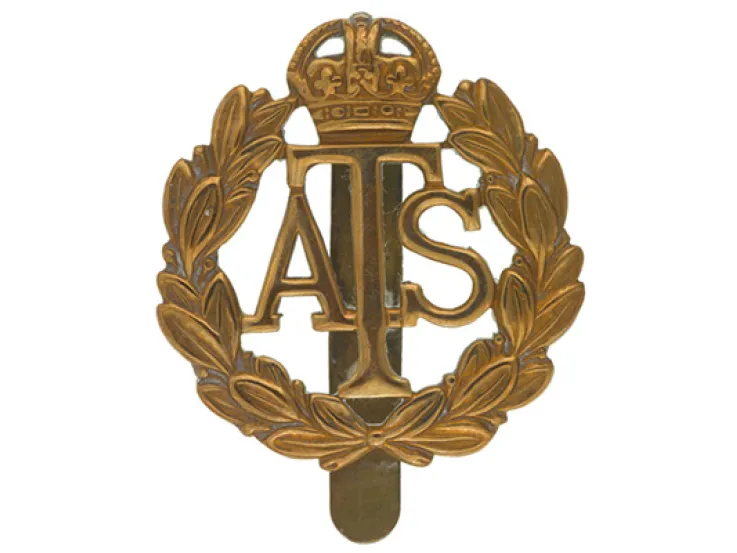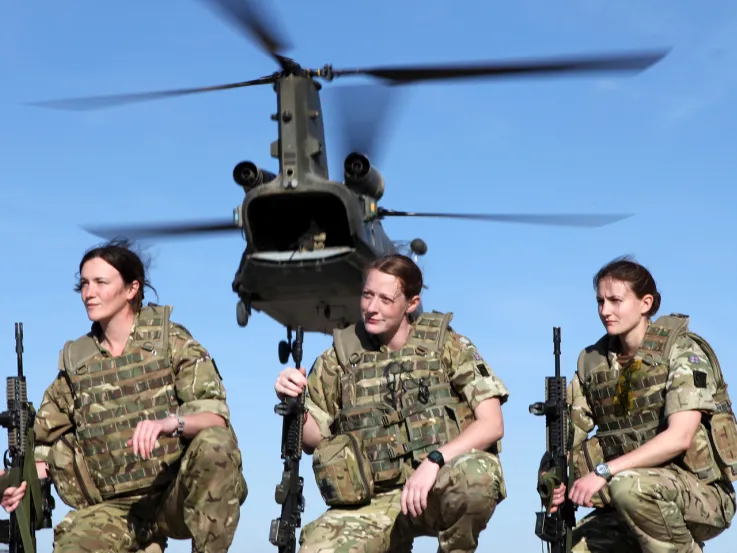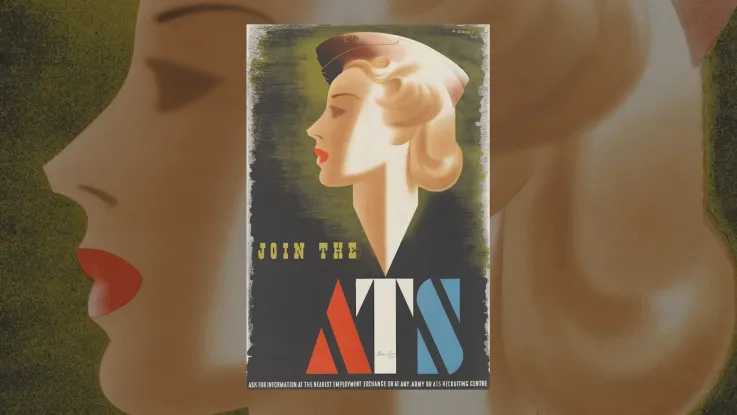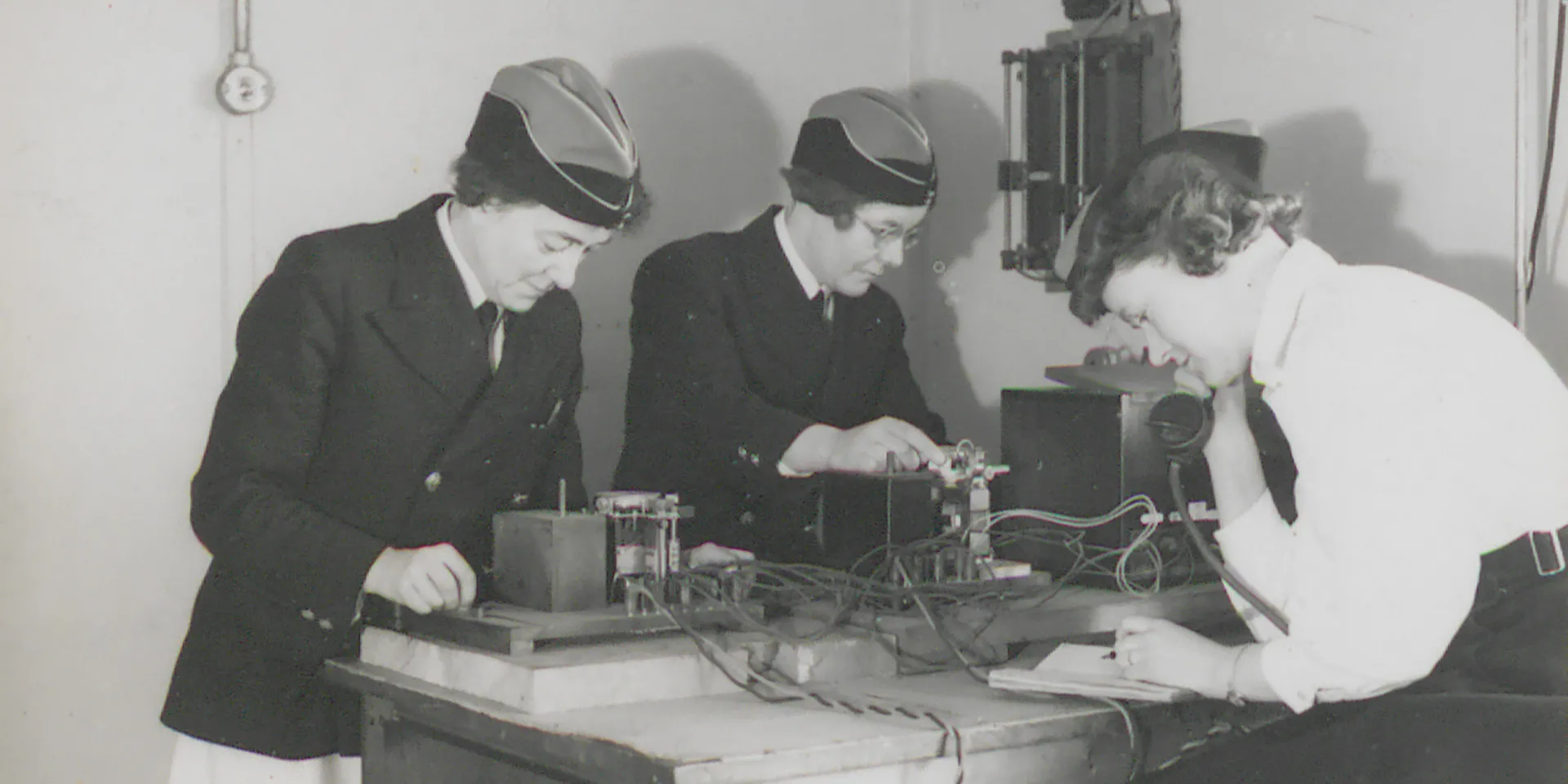
Section Leader Mary Oldnall (right) working on electrical apparatus, Shoeburyness, c1941
The Coomer collection
The National Army Museum holds a small collection, including papers and an oral history interview, relating to Mary Coomer and her career in the Auxiliary Territorial Service (ATS) from 1938 to 1945.
The interview was conducted as part of a larger project following the Museum's acquisition of the collections from the Women's Royal Army Corps Museum in 1993. The papers appear to have been donated by Mary herself after the interview in 1995.
This recently uncovered collection provides details of Mary's brief service in France, followed by her time on the Home Front. The interview gives a fascinating insight into life in the ATS and the wider story of women's military service in the Second World War (1939-45), covering issues such as pay, career opportunities and holding a senior non-commissioned officer (NCO) role.
Before the war
Mary Coomer (née Oldnall) was born in Wolverley near Kidderminster in 1917. After studying at Manchester Art College, she continued to live and work in Manchester as a textile designer. In the interview, she makes interesting observations about her career before the war and her efforts to secure a role in a male-dominated industry.
Signing up
In 1938, she took the decision to join the ATS, as part of the 21st East Lancashire Company. She discusses the process of signing up and attending training.
The road to Le Mans
Mary is then one of the first to be selected to go to France with the British Expeditionary Force (BEF), as a clerical sub-leader. She describes her initial arrival in Paris and how French civilians questioned the deployment of women.
Evacuation
She goes on to talk about the escalation of the war in June 1940, the subsequent evacuation of the ATS and the number of refugees fleeing through Le Mans.
On the ranges
Upon returning to England, Mary nominated herself to work as an Experimental Gunnery Assistant at Shoeburyness Ranges in Essex.

Section Leader Mary Oldnall (left) operating a searchlight, Shoeburyness, c1941
Experimental Branch
The Experimental Branch, Shoeburyness, dated back to 1849, when the land in South Shoebury was purchased by the Board of Ordnance with the intention of setting up an artillery testing and practice range.
In 1859, the Royal Artillery School of Gunnery was established; its focus was on the development of experimental weaponry and defence systems. From 1920 until 1948, it was known as the Experimental Establishment.

ATS personnel riding bikes in the snow, Shoeburyness, February 1941
Pay gap
The interview provides a fascinating insight into Mary's experiences while working at Shoeburyness, but also explores issues such as the gender pay difference and the impact of her role on her own personal development.
Promotion
In this clip, Mary talks about her role as a senior NCO and what it was like to work alongside men while holding this position.
Closer to home
Two of Mary’s brothers died while serving in the war. As a result, she decided to move closer to her parents. She spent most of the last three years of the war as a regimental sergeant major (RSM) with responsibility for nine ATS companies in the Lancaster and Carlisle District.
Benefits of military service
Despite the challenges and discrimination she encountered in both her civilian and military careers, Mary ends the interview by explaining the ways in which she personally benefitted from her time in the Army, and how it ultimately made her a more tolerant and accepting person.
Dig deeper
You can explore this collection (NAM. 1995-06-56 and NAM. 1995-06-82), and many others like it, at the Templer Study Centre, the National Army Museum’s research facility in Chelsea.

